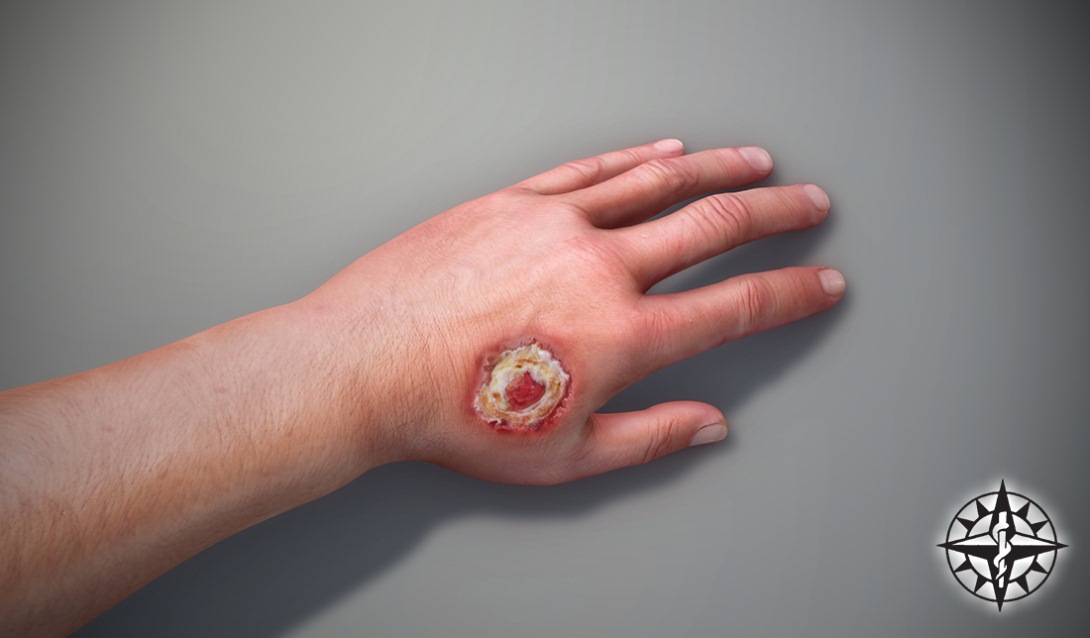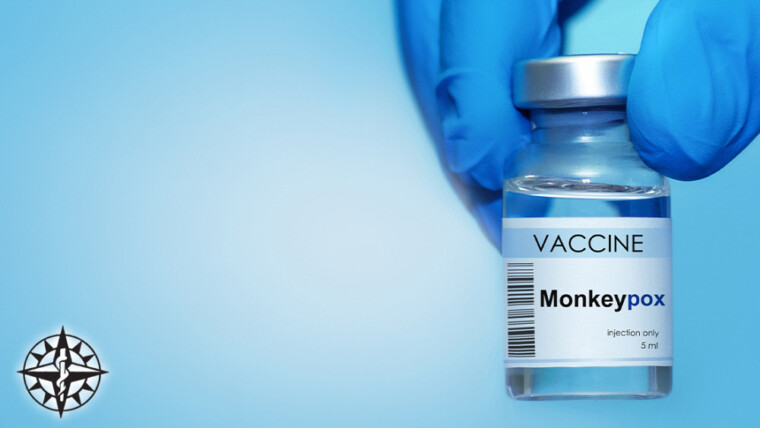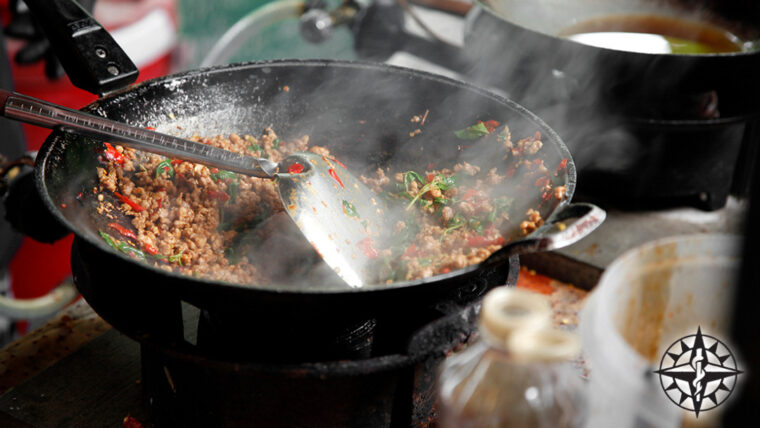Published on: June 7, 2021
What Are Skin Ulcers?
This is not a very pretty or fun topic to cover. However, we feel that it is necessary to make our readers more aware of Skin Ulcers. The fact that they affect so many people – especially older populations – brings the seriousness of these conditions to the forefront.
Skin ulcers are open sores caused by poor blood circulation. If you have poor blood circulation, then minor wounds (that otherwise would heal quickly) may not heal properly leaving that injury to develop into a painful skin ulcer. These sores and ulcers often become infected if not properly treated. The infection, left untreated, can spread to deeper tissue, bones, joints, and blood resulting in a very serious issue where immediate medical attention is needed.
These ulcers can appear on most parts of the body. Common places include the legs, hips, feet, buttocks, and back. Skin ulcers are more likely to affect elderly people.
Identifying a Skin Ulcer
Skin ulcers typically look like a round open sore in the skin. The outer border of the sore might look raised and thick. As the ulcer forms, you may notice the skin discoloration in that specific area. It might begin to look red and feel warm. Those with darker skin tones will notice that their skin may look shiny or even turning blue. As the skin ulcer worsens, it will begin to look like a crater. It will typically begin to weep clear fluid or even blood.
Other symptoms depend on the type and severity of the ulcer. Depending on the type of ulcer you have, you may notice:
- Swelling
- Redness
- Tenderness
- Itchiness
- Pain
- Skin Discoloration
- Changes in skin texture
- Yellow or green pus (due to an infection)
Skin Ulcer Risk Factors
Certain risk factors can lead to an increased susceptibility to skin ulcers. It is important to know what these risk factors are to be vigilant and prepared, both for yourself and your loved ones. Below are a few risk factors:
- Pregnancy: Pregnancy can cause hormonal changes. Additionally, increased blood volume may cause leg vein problems.
- Cigarette smoking: Tobacco smoke is widely known for hardening arteries. This will no doubt disrupt proper blood flow.
- Limited mobility: Being bedridden, paralyzed, or using a wheelchair puts your skin under constant pressure. Arthritis can limit your movement, as well as injuries to the leg.
- Increasing age: Age is linked to atherosclerosis and venous insufficiency. Older populations are generally more susceptible to developing skin ulcers.
- High blood pressure: Hypertension, or high blood pressure, damages the arteries and disrupts blood flow.
- High blood cholesterol: High cholesterol increases artery narrowing and oxidative stress, which can disrupt proper blood flow.
- Obesity: Obesity raises your risk for diabetes, atherosclerosis, and increased pressure in your leg veins.
- History of blood clots: If you are prone to blood clots, then you are more likely to have blood flow issues.
What Causes Poor Blood Circulation?
Since skin ulcers are primarily caused by poor blood circulation, it is important to understand the more common causes of circulation issues.
- Diabetes
Diabetes causes high blood sugar. High blood sugar can lead to nerve damage called peripheral neuropathy. People who suffer from peripheral neuropathy may lose the sense of touch in their legs and feet. When the feeling is lost in the legs and feet, the person, therefore, will not feel injuries or pain in these areas. High blood sugar can also slow wound healing. If all of this is left untreated, it is the perfect storm for the formation of skin ulcers. - Atherosclerosis
When fat builds up in someone’s arteries, it creates plaque. This formation of plaque in the arteries causes the arteries to narrow a great deal. The narrowing of the arteries is called Atherosclerosis, or arteriosclerosis. Arteries deliver blood throughout the body. However, when the arteries are too narrow, they cannot properly circulate blood. If part of the body does not get enough blood, skin tissue in that area begins to break down and forms a sore, which can quickly turn into a skin ulcer. People with diabetes are more likely to develop atherosclerosis. - Pressure
If one stays in the same position for too long, the constant pressure on those affected areas will squeeze blood vessels. Like atherosclerosis, this blocks healthy blood flow to skin tissue in those areas, eventually causing the skin to die and a skin ulcer to form. - Venous insufficiency
Venous insufficiency happens when your veins cannot properly send blood from your legs up to your heart. Therefore, the blood collects in the legs, leading to swelling. In the case of severe swelling, pressure can build up on the skin leading to the formation of ulcers. Varicose veins and blood clots are leading causes of venous insufficiency.
Types of Skin Ulcers
There are four types of skin ulcers. Each type has a different cause and slightly different symptoms. We will summarize each below.
- Decubitus (pressure) ulcers
Decubitus ulcers are primarily caused by continuous pressure or friction on a specific area of skin. They are also called “pressure ulcers” or “pressure sores”. Ulcers of this nature often develop in bony areas. This is due to the extra pressure the bones place on the skin. Decubitus ulcers are most often found in the following places:- Back
- Hips
- Buttocks
- Ankles
- Heels
- Venous skin ulcers
Roughly 80-90% of all leg ulcers are venous leg ulcers. It is largely due to venous insufficiency, as we mentioned above, causing very poor blood circulation in the legs, resulting in blood collecting in the legs. This builds pressure and severe swelling, causing venous skin ulcers to form. This type of ulcer usually affects the leg between the ankle and knee. - Arterial skin ulcers
Arterial ulcers, or “ischemic ulcers”, occur when Atherosclerosis results in poor blood flow due to blocked arteries. This specific type of skin ulcer is known to be extremely painful, which can worsen at night or when the affected person is not moving. These ulcers commonly form on the:- Lower leg
- Feet
- Heels
- Toes
- The outer side of the ankles
- Neuropathic skin ulcers
Neuropathic ulcers are usually caused by nerve damage or narrow arteries. Sometimes they are referred to as “diabetic foot ulcers”. These ulcers typically develop on the pressure points of the foot. This includes:- Heels
- Toes
- Bottom of feet
Because of the nerve damage that has occurred, the affected person likely will not feel the pain of the developing sore which could lead to the ulcer. The first sign they notice might be clear fluid on their socks. Nearly 15% of people who struggle with diabetes also struggle with Neuropathic foot ulcers. This is a terrible, compounding problem for people with diabetes.
Infectious Disease Associates of Tampa Bay
Infectious Disease Associates of Tampa Bay (IDATB) provides high-quality healthcare services for patients in the Tampa Bay metro area. If you feel a loved one has been infected or would like to test for infectious disease, then we are here to help. IDATB has over 30 years of experience treating Floridians with infectious diseases and provides an in-house lab for any necessary testing. If you have any questions or concerns about infectious diseases or skin ulcers, then please feel free to contact IDATB at 813-251-8444.





